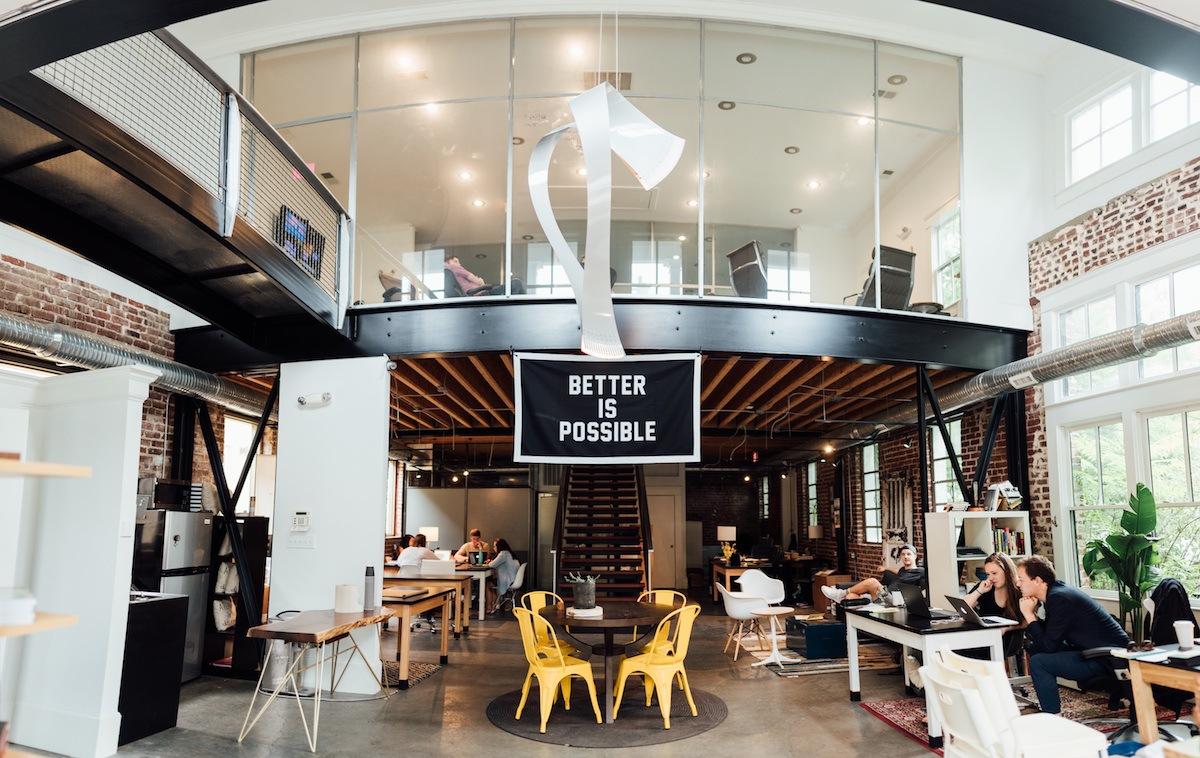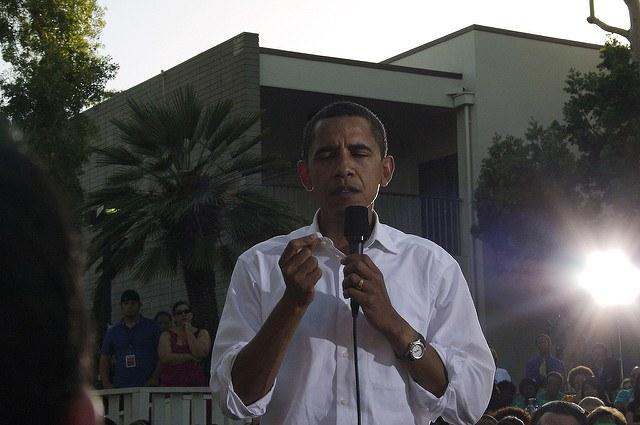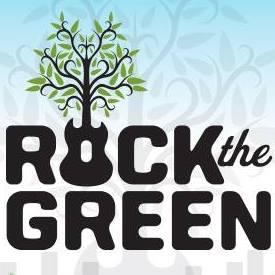Amazon: No. 1 for Counterfeits, Cardboard Waste and More


That cheap deal from Amazon may not be what it seems, as some say the e-commerce giant allows counterfeiters free reign on its marketplace. Add that to the existing labor, environmental and sustainability issues the company has mostly ignored, and the clear choice for ethical consumers may be to just shop elsewhere.
This comes from a CNBC report alleging that Amazon's Marketplace – which accounts for a huge percentage of the retailer's sales – is a haven for counterfeit products. Most of these products, CNBC reported, are sold directly by Chinese companies Amazon has actually courted for some time as it aims to grow into a dominant, unstoppable retail force.
"In Amazon's quest to be the low-cost provider of everything on the planet, the website has morphed into the world's largest flea market — a chaotic, somewhat lawless, bazaar with unlimited inventory," senior tech reporter Ari Levy wrote on CNBC."Always a problem, the counterfeiting issue has exploded this year, sellers say, following Amazon's effort to openly court Chinese manufacturers, weaving them intimately into the company's expansive logistics operation. Merchants are perpetually unsure of who or what may kill their sales on any given day and how much time they'll have to spend hunting down fakers."
Amazon is not the first retailer to keep prices low by utilizing cheap labor and Chinese-made goods. It's the same formula Walmart used to become the country's largest brick-and-mortar retailer. At one time, Walmart was the eighth largest trading partner with China, and its shift to Chinese goods was key in devastating American factories and their workers.
Moreover, not surprisingly, Walmart's massive stores heavily impacted the ability of small businesses to survive, particularly in suburbs and smaller towns, as they just could not compete on costs. Walmart built its profits upon its relationship with Chinese manufacturers, a formula duplicated by many other American companies, such as Apple, which manufactures nearly all of its products in China.
Amazon is, essentially, a digital Walmart that undercuts competition through low prices, fueled by low-wage costs in its warehouses (where workers have actually died from the high pace requirements) and, now, a focus on quantity – more and more sales – rather than quality. Amazon enables counterfeiting by making it difficult for consumers to know which products are being bought directly from Amazon, and which are from other retailers utilizing the marketplace. The company also doesn't vet marketplace vendors, and is slow to respond to legitimate vendors' complaints about counterfeit goods. Even the fact that a counterfeit product is fulfilled by Amazon doesn't matter, as Chinese producers ship freight directly to Amazon's American warehouses to then be sent to consumers.
As we know quite well here at TriplePundit, corporate culture matters. With these shady business practices, it should come as no surprise that Amazon is lagging far behind its fellow tech peers on sustainability too. It only recently hired its first sustainability director who, so far, seems to have done little. The company has yet to release even one comprehensive, industry-standard sustainability report.
And in fact Amazon's services, such as Prime, which gives consumers unlimited free shipping, are creating mountains of cardboard waste. The company prefers to let municipalities deal with those externalities as it pushes even more delivery services upon us, including one-hour delivery in a growing number of U.S. cities.
The truth is: The social and environmental cost of Amazon's growth is huge. The products you buy might be a fake -- and made in a factory that uses illegal or child labor -- and Amazon has a massive carbon footprint that it is doing little to address.
The next time you consider buying a product from Amazon, think twice. Is it really worth what you save? In the end, you might not even know what you're really getting.
Image credit: Simon via Pixabay
Beyond the Porn Principle: How to Better Evaluate Social Enterprise


Chris Miller
Most Americans have by now realized that not all businesses are created equally. Toms shoes, Newman’s Own, Patagonia, Hershey and even Google, with its former corporate motto of “don’t be evil,” have differentiated themselves from competitors by tying their business practices to social or environmental impacts.
Just as not all businesses are equal, the levels of social or environmental impact that companies create vary significantly. While any steps a company takes in the direction of corporate social responsibility should be commended, entrepreneurs and consumers who really want to make a difference increasingly need to understand the spectrum of social responsibility.
The “porn principle”
When the term “pornography” was put to the U.S. Supreme Court to define in 1963, Justice Potter Stewart famously stated simply, “I know it when I see it.” Similarly, most consumers rely on their guts alone when assessing one socially-responsible business against another.
Despite an ongoing debate among academics about exact definitions of this type of social business, there seems to be a common understanding of the most basic constituent parts that must be present for a company to attain the pure social enterprise status that has emerged.
To be considered a true social enterprise, a business must have been:
- Created with the explicit intent of positively impacting a social or environmental cause.
- Designed with a defensible financial model that attempts to sustain its impact with revenue generated by the sale of a product or service.
Both characteristics are required. A business that creates social or environmental value but without a sustainable financial model is still a worthy thing called a charity. Similarly, while there is nothing wrong with a business created with the primary intent of making money, even if the business has significant and measurable social or environmental impact, it does not rise to the level of intentionality required of a pure social enterprise.
The social enterprise spectrum
As more nonprofits and social entrepreneurs pursue the pure form of social enterprise and bring new products and services to market in virtually every category, this simple framework will become increasingly insufficient. The “porn principle” will no longer suffice.
At the same time, it will become increasingly important for entrepreneurs to understand where they are on the social responsibility spectrum — it will be a defining characteristic of their business.
Here are some questions entrepreneurs need to ask in order to evaluate their places on the spectrum:
- Was your business created under a nonprofit corporate structure?
- Has your business been granted tax-exempt status at the state or federal level?
- Is your business eligible to receive tax-deductible gifts or contributions?
- Is your business a low-profit limited liability company (L3C), benefit corporation, or other form of legal hybrid?
- Is your business B Corp-certified?
This is, of course, an ever-evolving list. The spectrum itself is evolving, too. But if you find yourself answering “yes” to some of these questions, you’re firmly angling toward social responsibility — and that’s how you should market your enterprise and define it internally.
To be clear, it is completely fine for a social entrepreneur to profit off her own hard work — that just can’t be the primary objective of the business. Undoubtedly, the marketplace will become only more confusing in the short term as more systemic approaches to the triple bottom lines become widely adopted. In the meantime, the ability to critically evaluate the claims of companies across the entire spectrum of socially responsible businesses is required of any entrepreneur who wants to do as much as he can to advance a more sustainable capitalism.
Image credit: Pixabay
Chris Miller is the founder and CEO of internationally renowned social entrepreneurship incubator and accelerator The Mission Center L3C. He is the co-founder of the Washington University Startup Training Lab and a senior lecturer of entrepreneurship at the University of Missouri-St. Louis.
Use Smart Tech to Make Your Small Business Sustainable


By Jennifer Tuohy
Looking to give your small business a leg up, and at the same time, make it more sustainable? Cutting the environmental impact of your business not only helps the planet, but it can also positively affect your bottom line, both through a reduction in consumption of expensive fossil fuels and by streamlining your workflow. Here’s a look at some of the energy-saving, Internet-connected technology you can use in your office to create a smarter, more sustainable workspace.
Smart lighting
Traditionally, lighting accounts for up to 40 percent of a building's energy use. While switching out incandescent bulbs for LED bulbs will drastically reduce the amount of energy used for lighting, there are three other ways to do so as well:
- Smart lighting, either smart bulbs or smart switches, can be controlled remotely via an app and programmed to turn on and off based on certain conditions, including time, sunrise/sunset, environmental conditions, motion sensing or based on triggers from other smart device (such as a motion sensor in a doorway or a connected door lock).
- Install occupancy/vacancy sensors in rooms that are not in constant use, such as conference rooms, break rooms and bathrooms. Occupancy sensors detect indoor activity within a certain area and turn the lights on when someone enters and off shortly after the last person leaves. The use of occupancy/vacancy sensors can cut wasted electricity by as much as 30 percent.
- Personal dimmer switches allow employees to control the lighting in a particular space to best suit their work process and the time of day. Dimmers not only use less energy than a standard switch, but they also extend the life of LED bulbs. However, not all LED bulbs are dimmable, and LEDs require special dimmer switches.
Smart climate control
Heating and cooling an office space can be one of the largest energy uses for a small business. Reduce that bill and cut the strain on the environment by exploring some smart, energy-saving solutions.
- Do away with the lock box over the thermostat and invest in smart climate control with a thermostat that programs itself automatically and adjusts based on occupancy and/or patterns of use. Thermostats such as the Nest Learning Thermostat, Honeywell Lyric and Ecobee3 use smarts to control the temperature for you, keeping it at a constant, comfortable temperature when the office is occupied, and saving energy when it is not.
According to an ACEEE study, smart thermostats were shown to reduce energy use by an average of eight to 15 percent, concluding that “overall, they can reduce total US electricity use across all sectors by about 0.50 percent.”
- Reduce the need for your HVAC system to work so hard by employing passive heating and cooling in your office space with smart shades. Motorized and Wi-Fi-connected shades can be programmed to automatically regulate the amount of heat able to enter or escape a space based on time of day and season. For example, ensuring the shades are closed during the sunniest part of the day reduces the solar energy entering your office, cutting the need for air conditioning. Some models will work with smart thermostats to further regulate and reduce energy use, resulting in significant energy savings.
Smart power use
Take a look around your office and count how many devices are plugged into an electrical outlet, consuming power. Now count how many of those are actively being used—likely less than half. This is a small, but significant, waste of energy. Smart outlets and smart plugs can shut off the power flow when a charging device is fully powered up, or based on a pre-set time or other triggers.
- Smart outlets/plugs. Program all your non-essential systems to shut off automatically at closing time and come back on when you re-open using smart plugs. These plugs and outlets allow you to control anything plugged into them wirelessly via an app over Wi-Fi or Bluetooth. You can also use the app to set up schedules or triggers for the device to turn on or off, helping reduce unnecessary power consumption. Additionally, many of these devices can also track the energy usage of the appliances plugged into them, helping you understand your energy consumption and plan your electricity usage more thoroughly.
- Smart power strips. These come in a variety of configurations, but are primarily designed to reduce energy use from vampire power traditionally sucked up by peripheral devices on standby. You can have a power strip controlled by a master outlet, into which you plug a primary device, like a computer. The computer peripherals can be plugged into the other outlets and will stay off until the master device is powered on by the user. Another variation is a power strip with three types of smart outlets: the master outlet, two “always on” outlets for devices that need continuous power (like a router or landline phone) and four “automatic energy saving” outlets. These are designed to switch off completely once power is no longer needed, such as when the device attached is fully charged or has gone into standby mode.
A smart office also has the potential to learn and become smarter the more connected devices you introduce, further increasing the potential for energy savings. Most of this is simple stuff that you can do yourself, like ensuring a power strip is off and the lights aren’t left on. However, you or your employees may forget at some point—but the smart devices won’t. The combined impact of every small business in the country employing these types of energy savings will have a significant impact on global energy use.
Image credit: DesignCue via Unsplash
Jennifer Tuohy is a mom of two who is interested in sustainable and eco-friendly technology. She is a home automation enthusiast and advises small business to use smart home tech to reduce their footprint on the planet. She writes on behalf of The Home Depot, which offers a wide selection of smart home products.
Corporate Mentoring Builds Leaders From Within


Sometimes people need a spark to get creative ideas flowing. Or, as the Bible says, “iron sharpens iron.” How does that happen within a company? The answer: corporate mentoring.
Corporate mentoring is on the rise, according to Chronus, a company that delivers mentoring, coaching and onboarding programs to companies, universities and organizations. Mentoring is a mutually beneficial relationship, which is likely why more companies are adopting mentoring programs.
Lora Phillips, director of corporate responsibility for Symantec, has participated in such programs as both a mentor and a mentoree. “As a mentor I got a ton out of it,” she told TriplePundit. “I think there’s real value for everyone involved. The people being mentored increase in confidence. They get a different perspective on how to deal with the issues they face. For me, one of the biggest benefits of being a mentoree has been getting that spark of creativity.”
A 2013 study published in the Journal of Vocational Behavior found that mentoring not only helps those being mentored, but helps mentors as well. Researchers found that mentors were more satisfied with their jobs and committed to the organization. And providing career mentoring was almost always associated with career success. As the authors stated, “The findings support mentoring theory in that mentoring is reciprocal and collaborative and not simply beneficial for protégés.”
Symantec’s corporate mentoring program is at the “very, very beginning stages ... It just kicked off last month,” Phillips told us. The company plans to begin by focusing on its network of community-relations committees and employee-resource groups. For example, the company is home to a women’s resource group, an LGBT resource group and a black resource group, all of which will collaborate on the new mentoring initiative.
Symantec assembled a small group of people for the pilot who meet virtually on conference calls, with a focus on leadership development. They will spend the next few months exploring various leadership topics.
“We have a number of different groups that are operating at the grassroots level,” Phillips explained. “What we want to do is identify those people who have enormous potential to really show some leadership qualities in driving those agendas and taking a leadership and influencer role at their site.”
Why is Symantec tackling corporate mentoring, especially considering its already sizable network of employee-resource groups? “We set high-level corporate responsibility goals," Phillips told us, "and we drive them from a departmental standpoint.” Symantec realizes that without the action, advocacy and passion of it employees on the ground, its strategies won't translate into actionable results.
“So, we really want to invest in those employees and make sure that we’re providing them with the tools to channel that passion and that spirit of advocacy in ways that allow them to grow professionally and the business to advance its goals."
Corporate mentoring programs boost the bottom line
But mentoring programs go beyond sparking creativity. “Mentoring improves retention, promotion, productivity [and] development,” the Millennium Group, LLC, a management consulting and professional services firm, concluded in a white paper.
The group lists statistics to back up that statement: 77 percent of companies said mentoring programs increased retention, and 75 percent of executives indicated that mentoring played a key role in their careers.
Management Mentors, a company that designs and implements business mentoring programs, lists the benefits of mentoring for a business:
- Mentoring conveys that management is willing to invest in its employees.
- It shows the outside world that the company values its employees.
- It fosters more loyal employees.
- It creates a more positive work environment.
- It fosters leadership skills in mentors and encourages the mentoree’s growth.
A mentoring program can help participating employees -- the mentorees -- move up within a company, which creates new leadership.
Four years ago, DHL Express started a corporate mentoring program in the U.S. that it calls its Advanced Mentoring Program. Through the program, certain employees are selected to be supported by “experienced managers and given individual coaching,” the logistics company wrote in a blog post about the program. When DHL Express evaluated its pilot program, it found that 60 percent of the participants had moved into higher positions. And the company considers the program to be highly successful.
How to start a corporate mentoring program
How does a company make mentoring a priority and drive new thought leaders from within its own ranks? Phillips suggests three simple steps to get started:
- Decide on goals for the program.
- Identify the right people to help and to serve as mentors.
- Figure out where the first two intersect.
Online mentoring technology platforms like Mentor Scout can also be of help. Companies like Toyota, Xerox, United Technologies and ConAgra Foods have all used Mentor Scout to develop corporate mentoring programs.
The company suggests a number of ways to start a mentoring program, including planning workplace mentoring around a company or organization’s human-resources goals and outlining the objectives for each initiative of the mentoring program. It also suggests finding an "executive champion,” specifically, someone that is outside of the HR department who attributes their success to having had a great mentor.
Image credit: Pixabay
White House Seeks to Reduce Local Jail Populations


With more than 11 million people passing in and out of its local jails annually, the United States boasts the largest incarceration population in the world. But the White House isn’t particularly proud of that figure, and it plans to trim the number with its new Data-Drive Justice Initiative.
The initiative aims to “break the cycle of incarceration” by moving low-level offenders with mental illnesses from the criminal justice system to doctor’s offices. This plan would target the 64 percent of people in America’s 3,100 local jails who suffer from mental illness, according to a news release from the White House.
The initiative’s second approach to lowering incarceration rates will place low-risk offenders who cannot afford to post bail but pose no threat to the community back in their homes while they wait for their trial date.
Sixty-seven states, cities and counties have committed to joining the DDJ Initiative, including some of the most populated — and incarcerated — areas in the United States. Among those cities are Los Angeles, New York City, Washington, D.C., Dallas and Oakland, California. None of the 20 most incarcerated states per 100,000 residents — with Louisiana, Oklahoma, Alabama leading the way — are participating in the initiative, according to state-by-state data from The Sentencing Project.
Local governments spend approximately $22 billion a year managing the millions of people who funnel in and out of local jails. As CBS News reported in 2014, Americans pay an average of $260 per year on corrections, more than triple the amount a taxpayer paid in 1980. The Brookings Institution’s Hamilton Project revealed that the country spent $80 billion for incarceration in 2010.
The DDJ Initiative will serve as an experiment, and could potentially spread to other states if implemented successfully. The program will require oversight to judge whether or not the accused are able to return home while they await their trial. And it could also free up space in overcrowded local jails and save local governments millions, possibly billions, of dollars.
Here's a snapshot of American prison stats from Mic:
- The U.S. has 5 percent of the world's population, but 25 percent of the world's prisoners.
- Sixty-five million Americans have criminal records.
- In 2012, one in every 108 adults was incarcerated.
- Public defenders in California are handling an average of 400 felony cases each year.
In Defense of Rooftop Solar


The utility giants are trying to monopolize solar by concentrating it in a few large solar plants under their control. They claim it's cheaper and more efficient than decentralized alternatives. Despite their PR and marketing efforts, the truth is that rooftop solar has an crucial role to play in expanding America's clean-energy system and ensuring that it is resilient. And rooftop solar's perks go far beyond purely financial cost-benefit analyses.
The utility argument was most clearly stated in a very pro-large scale solar Reuters article, in which industry advocates cited lower costs and economies of scale as to why their facilities generate energy at far lower costs than rooftop systems.
"Unsubsidized utility-scale solar power costs $50 to $70 per megawatt-hour (or 5 to 7 cents a kilowatt hour), compared with $52 to $78 for the most efficient type of gas plant, according to a 2015 study by investment bank Lazard," Reuters reported."Generating power from residential rooftop panels is far more expensive, ranging from $184 to $300 a MWh before subsidies, the report said."
This piece ignores several important factors, including that large-scale developers also receive generous subsidies -- in the form of tax breaks, low-interest loans and subsidies -- that factor into this cost. It also ignores the environmental impact of siting large-scale systems in places like sensitive desert landscapes, or the cost of transmission lines to bring this power from where's it is generated to where it's needed.
Rooftop solar, on the other hand, generates power right where it's needed. And, if coupled with a home battery system such as the Tesla Powerwall, it can even provide energy when the sun is not shining. A rooftop system reduces stress on the grid, utilizes underused space and even helps keep buildings cool. If we put solar panels on more rooftops, that could generate half of America's energy needs without building any new transmission lines or large-scale plants.
Rooftop solar also employs far more people than utility-scale solar, which means more well-paying jobs that are kept within communities across America. This is vitally important as rooftop solar expands into low-income communities -- which can provide opportunities for economic empowerment, if done properly.
Why do utilities want to focus on large-scale plants? Quite simply, control. By controlling both the means of production and the distribution systems, utilities can make a lot more money. That's why they promote the benefits of large-scale developments while ignoring the pitfalls. Independent studies – those not conducted by industry fronts – come to a nearly unified solution.
“The accumulating national literature on costs and benefits of net metering ... concludes— whether conducted by Public Utility Commissions, national labs, or academics — that the economic benefits of net metering actually outweigh the costs and impose no significant cost increase for non-solar customers,” Mark Muro with the Brooking Institute wrote in a blog post. “Far from a net cost, net metering is in most cases a net benefit — for the utility and for non-solar rate-payers.”
In fact, utilities have not only stood in the way of rooftop solar, but they've actively tried to kill it. We all know about how changes to net metering essentially halted rooftop solar expansion in Nevada, despite the fact that rooftop solar provided a $7 million net benefit to all Nevada ratepayers. Of course, utilities don't benefit when ratepayers benefit. They benefit when ratepayers pay more.
That's why in some states, like Florida, it's essentially illegal to put panels on your own home. The Reuters article amazingly highlights these states, which restrict net metering and rooftop access, as examples of why large-scale solar is better without giving any context.
PG&E and Southern California Edison even tried to defeat rooftop solar in America's sunniest state, California, home to more solar than the rest of America combined. But thankfully environmentalists and solar advocates defeated their efforts.
An ideal system would be one with a diversity of sources, and a balance between not only large-scale solar and rooftop solar, but other alternative energies too, such as wind, small-scale hydro-power and, of course, energy storage. But putting all of our energy resources into one bucket, controlled by a single entity, is a recipe for disaster. Rooftop solar must expand to its full potential, as it is a crucial part of our energy future, no matter what utilities say.
Image credit: Mobius via Wikimedia Commons
Come Together: Can Climate Be a Bipartisan Issue?


By Zach Bernstein
The 2016 election is about to get serious. (Considering how the campaign season has gone so far, you may doubt that’s possible, but stick with me.)
The Democrats and Republicans will host their nominating conventions this month. And barring a major shakeup, that’s where we’ll see Hillary Clinton and Donald Trump officially earn their respective parties’ backing for the presidency. And from there, the general election officially begins.
If you’ve followed elections long enough, you know basically what to expect -- sharply divergent views on everything from trade to taxes to foreign policy.
But what if there were issues where both parties could actually agree on solutions? We don’t think this is too outlandish -- in fact, when it comes to the environment, both parties have more in common than they think.
Saving green by being green
If you want to know whether conserving the environment is good for business, just look at what the business community is doing. Look at Newsweek’s list of the top “green companies” of last year. It runs the gamut of industries from health care to IT to consumer staples. And many of these top “green” companies, like Apple and Hershey, are household names earning billions in revenue every year.
Or look at the list of the world’s most admired companies, a list that includes Google, Berkshire Hathaway and Starbucks. It’s no coincidence that many of the most admired companies also have major sustainability programs in place.
Looking closely at policy, more than 200 major firms, including Ikea, Mars and Unilever, publicly announced their support for the EPA’s Clean Power Plan in 2014. And as of last year, more than 1,000 companies worldwide -- including 18 energy firms -- had set an internal carbon price that could help them adapt if governments decided to institute a carbon tax (or in the case of companies like Ben and Jerry’s, actually devote revenue to invest in reducing emissions).
Too much of the political debate still focuses on whether climate change is real, but within the business community, that debate is over. The costs businesses and their markets have already paid for climate-related disasters, losses and unreliable resource supplies have become too high to ignore. Businesses large and small, high-tech or not, need a stable environment in which to operate. They want climate addressed to keep the economy advancing, grow jobs and keep the U.S. globally competitive.
Bridging the debate divide
Okay, but what about the fact that one major party is absolutely dead-set against even admitting that climate change is real?
Actually, that’s not entirely true.
Republican senators including Lindsey Graham have spoken out on the need to address climate change. And a resolution in the House calling for action on climate change has 13 co-sponsors -- all Republicans. Even right-leaning think tanks like R Street and RepublicEn have made climate action a primary issue.
In fact, according to at least one survey, most Republican voters believe climate change is real and support efforts to mitigate it – possibly including a carbon tax, depending on what the money is used for.
Sure, there’s resistance within the GOP. But it’s becoming much more acceptable to hold the science-based view -- and increasingly, the voters are leading the party, not the other way around.
So what’s the best way to move forward? That question will be debated at an event being held concurrently with the Republican convention in Cleveland; an event featuring a number of conservative thought leaders who are trying to get beyond partisan talking points to solve problems.
Changing the partisan climate
This event, hosted by the American Sustainable Business Council (ASBC) on the campus of Cleveland State University, will explore how sustainability has already become a competitive advantage, as the leading companies mentioned earlier can attest. Further, the event will focus on what kinds of policies can help realize a sustainable economy. (ASBC will host a similar event at the Democratic convention in Philadelphia the following week.)Agreeing that climate change is a problem is a good first step, and long overdue. Figuring out how to solve climate change will pose its own challenges.
Remember the survey that showed most GOP voters think man-made climate change is real? It also showed that they were highly skeptical of tools like the Clean Power Plan, which also happens to be the most significant climate policy underway today.
Something like a carbon tax, despite the name, could actually be more palatable to conservatives. A carbon tax fits with the economic principle that taxes can be used to dis-incentivize activity America doesn’t want, such as greenhouse gas pollution; and it would not set an arbitrary limit on how much greenhouse gas pollution would be allowed. The market would decide that for itself based on how high the price would be.
Even that market-based approach, however, is more difficult than it sounds. When ASBC hosted former U.S. Rep. Bob Inglis (R-S.C.) at its Fourth Annual Business Summit last year, his remarks made it clear that conservatives would probably demand carbon tax revenues be used to offset other taxes -- in other words, swapping a carbon tax for, say, a corporate tax cut. Some progressives might be opposed to that swap, while others might prefer the money be used for projects like infrastructure repair. And it’s also likely conservatives would want any such carbon tax to be used instead of the Clean Power Plan, which would trouble environmentalists.
There will be very real differences in how each side would choose to tackle climate change; differences that won’t be easily bridged. But to even reach that point would mean that both sides agree: We need to face the facts about climate because our economy, safety, and way of life will depend on it.
That’s the reason businesses should make time to join ASBC at the Republican and Democratic conventions, and sign on to ASBC’s campaigns on climate change. The only way to make sure political leaders understand the threat of climate change is to show that the business community is ready to speak out on it. When businesses speak, policymakers listen. And when business tells them climate change can kill jobs in their states or districts, that’s a risk they can’t ignore. We know what the months after the conventions will be like. They’ll be loud, with a lot of voices clamoring to be heard. The debates will be heated and not always focused on the issues. The disagreements will be real. This is, after all, how politics works.
But once the dust has settled and we’ve picked a new president and Congress, those people will have to get down to the business of governing. Whoever takes the power in January will also be taking responsibility for what happens next. Let’s hope those new leaders will take input from the voters, the scientists, the military and all sectors of the business community, including members of the American Sustainable Business Council -- and then take on the challenge that is climate change.
Unlike fact-checking a presidential candidate, it may be easier than you’d think.
Image credit: Flickr/NPS Climate Change Response
Zach Bernstein is Manager of Research and Social Media for the American Sustainable Business Council.
Bank of America Pledges $40 Million to Youth Employment


Several years after the 2008-2009 global financial crisis, banks still have a long road ahead to earn the trust of many citizens, especially younger ones. This is especially true here in the U.S., where the evidence suggests millennials are continuing to leave the big banks and trust their money with smaller community banks.
Of course, many Americans do not bother to use banking services at all: The Center for American Progress estimates that 4 out of 10 citizens younger than 35 are either unbanked or “underbanked.” A recent Brookings Institute report suggests 3 million Americans between the ages of 16 and 24 are “disconnected,” as in they are neither enrolled in school nor gainfully employed.
These numbers pose long-term challenges for the U.S. economy — and for the banking industry, as well. To that end, one bank plans to invest millions in youth employment in an attempt to staunch these trends.
On Tuesday, Bank of America pledged $40 million to support youth-development initiatives like summer internships, skills trainings and leadership programs. The three-year investment will bring funds to nonprofit partners like Boys & Girls Clubs of America, Jobs for the Future and Urban Alliance.
With the goal to reach at least 100,000 young Americans, this “investing in young adults” program will build upon the bank’s existing youth initiatives, which include a summer student leaders program and internship rotations for young professionals.
The North Carolina-based financial giant says the long-term goal of these projects is to develop a pipeline of young professionals and a more diverse workforce. (Left unsaid was the potential to groom future customers.)
Other banks are also taking the hint that young Americans’ disengagement from the financial sector brings not just long-term challenges, but also an opportunity to prove banks are committed to community and economic development. For example, JPMorgan Chase announced a five-year, $75 million program to take on the global challenge of youth unemployment. A $100 million series of investments in the Detroit area also offers opportunities for young entrepreneurs to turn their ideas into profitable businesses.
Other banks, such as Wells Fargo and First Republic Bank, are also showing more interest in funding youth-related programs, from community development to fiscal literacy.
Financial institutions have a vested interest in proving that they are here to help make the American economy work and offer opportunity, and not just profit shamelessly and leave taxpayers cleaning up their mess, a belief that films such as "The Big Short" have helped to perpetuate. Gaining the trust of the 77 million millennials in the U.S., after all, means big business in the long run, as the paycheck-to-paycheck earners of today will eventually need the banks’ far more lucrative retirement and mortgages of tomorrow.
Image credit: Pete Kraynak/Flickr
A Growing Crisis: Insects are Disappearing -- And Fast


We all know about the huge declines in bee and monarch butterfly populations. Now, it turns out that in some areas nearly all insects are at risk of extinction. And if we don't solve this problem soon, the repercussions could be huge.
Insects are an important part of the global ecosystem. They not only provide important pollination services, but they also occupy an important place on the bottom of the food chain for many animals. Fewer insects means less food, leading to plant and animal population declines.
“The growing threat to [insects], which play an important role in food security, provides another compelling example of how connected people are to our environment, and how deeply entwined our fate is with that of the natural world,” said Achim Steiner, the executive director of the United Nations Environment Program, in a press statement.
One of the challenges is that insects are not well understood at an individual species level, because there are millions of insect species and only a limited number of insect specialists. Only about 20 percent of the world's insect species are cataloged, and the symbiotic relationships that many plants have with insects are rarely fully understood.
“Unfortunately, information on invertebrates in general, including insects, is very limited, restricted to a few groups and a few localities,” Rodolfo Dirzo, an ecologist at Stanford University, told Yale 360. He was the lead author of a 2014 study that was one of the first to document the fall in global insect mass.
So, what's causing the insect decline? In one word, us. The specific causes are likely very complex, but they are almost certainly connected to human impacts. It could be chemicals, like the pesticides class “neonicotinoids” that are connected to the bee declines. Or the growing number of rivers and waterways around the world that are polluted due to factory and agricultural run-off, or the still-growing number of pollutants we're putting into the atmosphere. But one thing is almost certain: We are to blame.
"Their decline is primarily due to changes in land use, intensive agricultural practices and pesticide use, alien invasive species, diseases and pests, and climate change,” said Sir Robert Watson, vice-chair of the Intergovernmental Science-Policy Platform on Biodiversity and Ecosystem Services, in a press statement.
Another oft-cited cause is the overuse of nitrogen fertilizer – something far too common in the monoculture corn fields of middle America. These corporate-driven, mono-culture farming methods are also to blame, as they limit the space for most insects and the plants to which they connect to survive.
Instead of waiting to discover the cause, we need to take immediate action now. That means reducing the number of chemicals we use, eliminating pollution and rapidly cutting back on greenhouse gas emissions, which also may be connected to what's happening. It also means reducing the scale of monoculture farming and returning to more natural, diverse, bio-dynamic farming methods that increase biodiversity.
Because if we lose insects, we'll soon lose a lot more.
Image credit: Uditha Wickramanayaka via Flickr
Rock The Green: Entertainment Plus Engagement for Sustainability


This article is part of a series of interviews with companies supporting the Rock the Green sustainability festival. Follow along here.
One of the most sustainable music festivals in the United States is scheduled to rock Milwaukee once again on Sept. 17, and TriplePundit is pleased to be playing a role. Rock the Green is a one-day event. It's also one of the only music festivals around with sustainability as a key goal -- in fact, it's more properly referred to as a sustainability festival. Rock the Green's stated mission is to educate and empower the community to take actionable steps to live sustainably through a combination of engagement and entertainment.
Our Midwest readers may already have plans to attend (get your tickets here after July 18!). But for those of you elsewhere, we've put together a short series of interviews with some of the companies and organizations that support the event. Each one, large and small, has its own reason for getting involved and its own sustainability story to tell. For the next several weeks, 3p will publish the interviews and tell you more about the festival -- stay tuned!
To kick things off, I spent some time talking to Rock the Green's organizers to hear a little about how things got started and why sustainability matters.
TriplePundit: What's your company's definition of sustainability, and why is it important to you?
Rock the Green: Our definition of sustainability is any small or large action that helps to protect the planet. Rock the Green is an environmental charity that spotlights environmental innovation at an annual sustainability festival. Our mission is simple: Educate and engage people to live more sustainably through spotlighting environmental innovators and providing every day examples that others can copy.
After producing hundreds of events and festivals around the country, Lindsay Stevens Gardner, Rock the Green founder and executive director, saw the environmental impact from large-scale events. And it wasn’t pretty! Public events generated tons of waste. She wanted to create a festival that was different: one that looked at every aspect of production and holistically greened it -- step-by-step.
By making conscious production decisions, involving key community innovators and applying zero-waste techniques, Rock the Green proves that we can have all of the music without the waste. Lindsay envisioned the festival as an example and an educational opportunity for communities and music fans. We embrace all ranges of sustainable living, whether a daily recycler or a tenured environmentalist, because every small step helps protect the planet. And collectively, every small step adds up to huge impact.
3p: How do partnerships play into the success of Rock the Green?
RTG: Our partnerships with community innovators are key to our success in both educating and engaging the community. By spotlighting the efforts and eco-stories of these innovators, we inspire the community to try some of these efforts in their own lives. Our partners can speak for themselves:
"By merging entertainment and sustainable engagement, Rock the Green makes a positive impact on communities while establishing our city as an environmental leader. Our hope is that Rock the Green’s message isn’t for just one day of the year. The goal is for attendees to leave the festival with a greater appreciation for sustainability and an enhanced desire to make their hometown more sustainable."
- Milwaukee Mayor Tom Barrett
"Rock the Green rocks! Speaking on behalf of InSinkErator, we were extremely happy to be part of message again this year."
- Jeff McMahon, Director, Grind to Energy - InSinkErator (A RTG Sponsor)
"It was indeed a great day!!!! I talked all day to so many interested people in the charge station, and even one woman who just bought a Leaf and has been using several of our stations!!! That was great news. You guys did such a great job in organization and it was a pleasure being a part of this years show."
- Dave Hansen, ElectriCharge Mobility (A RTG Sponsor)
3p: What are the results of these large-scale, zero-waste efforts at the sustainability festival?RTG: We can share some data from the last event in 2012, which was recognized as one of the greenest music festivals in the world by the U.K.-based A Greener Festival organization:
- 93 percent of the waste generated at the event was composted or recycled.
- 100 percent of food scraps were processed and upcycled into fertilizer.
- Only 13 trashcans went to the landfill as opposed to the expected 4+ tons per EPA metrics.
- Each fan produced about 1 ounce of waste -- compared to an EPA projection of 16 ounces per attendee.
RTG: Rock the Green is brought to life because of its many volunteers. These people lend their talents and time to make Rock the Green successful, especially at the festival level. Their dedication and passion for the environment, music and the community is what makes our mission real.